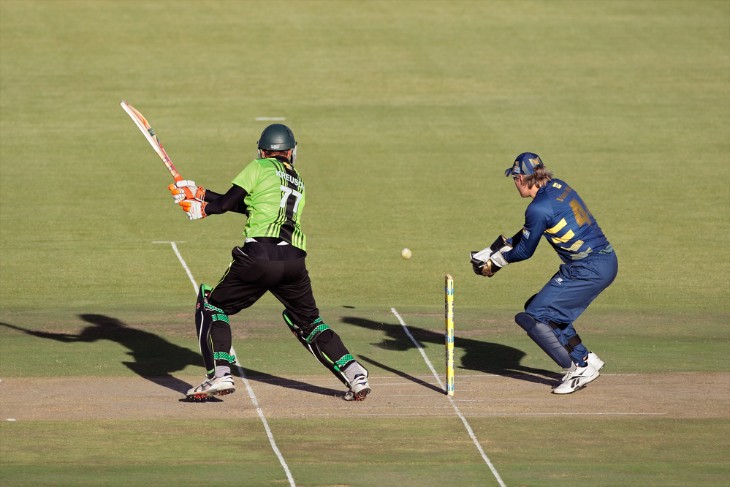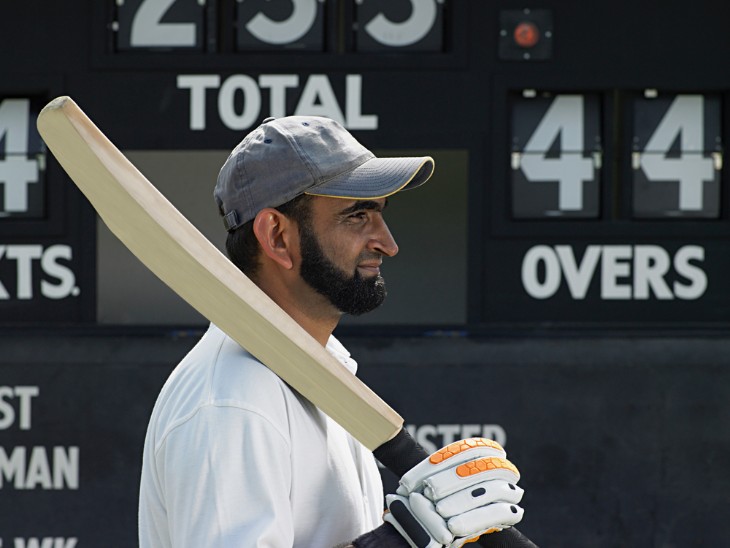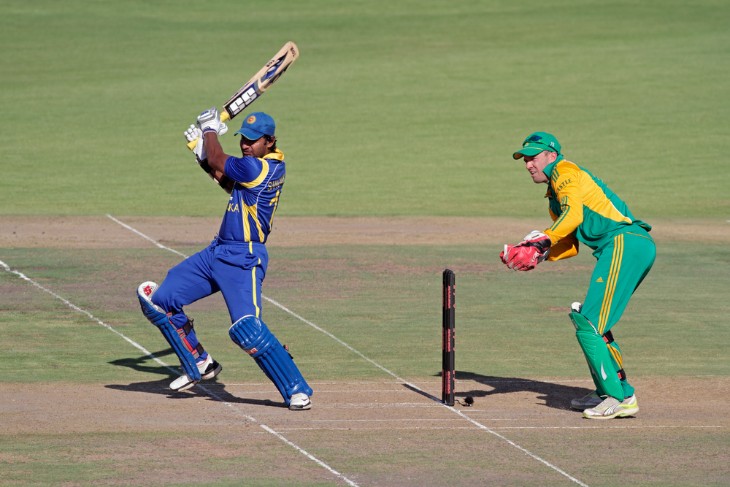Introduction
A duck is one of the most popular terms that are commonly used by commentators, experts, and cricket fans during a match. A duck can often prove to be the cause of anguish for a batter and delight for a bowler.
In cricket, the word 'duck' may sound strange, but it is an integral part of the terminology of the game. When a batsman is out without scoring any runs, he is called a 'duck'. Although its origins remain somewhat mysterious, it has been widely adopted into cricket culture. Be it a golden duck (out on the first ball) or a silver duck (out without facing the ball), ducks add interest to cricket statistics and anecdotes. So, although it may not involve winged creatures, 'duck' is a term loved by cricket lovers, adding an element of mystery and charm to the rich history and tradition of the game.
What Is a Duck in Cricket?
In cricket, a "duck" means that a batsman is out without contributing any runs to the team's score. When a player is out for a duck during a match, he is colloquially called a "duck". Ducks are not only a measure of a player's performance but also a source of attraction and sometimes entertainment in the game. They add a statistical and historical dimension to cricket, which often gives rise to anecdotes and discussions among fans and enthusiasts.
What is a duck in cricket: Its Origin
The word 'duck' in cricket is believed to have originated from the similarity of the number zero on the scoreboard and a duck's egg. This concept is analogous to baseball, where a batter who strikes out without scoring is said to have earned a "goose egg". Although accounts of its origin may vary, the association with the 'duck' in cricket has persisted due to this symbolic similarity. The term has become an integral part of the language of cricket, representing the dismissal of a batsman without adding any runs to the team's score.
The historical origin of the word 'duck' in cricket is linked to the game's association with the former British monarch Edward VII. During his school days, Edward, then known as the Prince of Wales, was an ardent cricket lover and regular player. Despite his enthusiasm, he was not particularly skilled with the bat and was often out without scoring.
In one specific incident during an exhibition match in July 1866, Prince Edward was out without adding any runs to the score. A reporter covering the match for the Daily Times wrote that Edwards "returned to the pavilion for duck eggs." It is believed that this incident popularized the use of 'duck' to denote a score of zero in cricket. Since then, the term has become an integral part of cricket jargon, referring to a batsman being out without contributing runs.

What are the different types of duck out in cricket?
In cricket, the term 'duck' is a general reference to a batsman getting out without scoring any runs. However, the interesting aspect is that there are various types of ducks that represent different ways of being dismissed without contributing to the team's score.
Some of these different duck outs in cricket are:
Regular Duck:
A 'Regular Duck' in cricket refers to a situation where a batter is dismissed for zero runs after having faced more than one delivery in a match. In other words, the player has been at the crease for a period of time but failed to contribute any runs to the team's total.
Interestingly, there are instances in cricket history where a player has faced a substantial number of deliveries without scoring a run, leading to what is often called a "long duck." An example is New Zealand's Geoff Allott, who famously spent 101 minutes at the crease and faced 72 deliveries without scoring a run, setting a record for the longest duck in the history of the game.
Regular Duck:
A 'Golden Duck' in cricket occurs when a batsman is dismissed while facing the very first ball of their innings. It is considered a challenging and unfortunate start for the batsman. An example of this is when Indian cricketer KL Rahul recently experienced two consecutive golden ducks, getting out on the first ball he faced in both the T20 World Cup and the Asia Cup group stage fixture.
There's another term closely linked to the golden duck called a 'King Pair.' A 'King Pair' happens when a batsman is dismissed on the very first ball faced in both innings of a first-class cricket match without scoring any runs. It's essentially a pair of two golden ducks in the same match and is referred to as a 'King Pair.' These occurrences are noteworthy in cricket statistics and often indicate a challenging game for the batsman.
Diamond Duck:
A 'Diamond Duck' in cricket is a rare and peculiar occurrence. It happens when a batsman loses their wicket without facing a single legal ball in the innings. This can take place in various ways, such as when a batsman gets run out while attempting to take a run on a wide ball or when they are dismissed at the non-striker's end without ever having faced a legitimate delivery.
In essence, a diamond duck signifies a dismissal without the batsman officially being part of the action in terms of facing a regular delivery. These instances add an element of unpredictability and curiosity to cricket statistics.
Platinum Duck:
A 'Platinum Duck' in cricket is an even rarer occurrence than the more commonly known ducks. It transpires when a batsman is dismissed on the very first ball of the innings or even on the first ball of the entire match. This extremely early dismissal is often humorously referred to as a 'Platinum Duck.' In some regions, it's also known as a 'Royal Duck.' Such a swift dismissal, right at the outset of a match, adds an element of surprise and amusement to cricket, making it a memorable occurrence in the sport's history and statistics.
Laughing Duck:
'Laughing Duck' is a term used in cricket to describe a situation where the last wicket of a team's innings falls without adding any runs to the team's total score. It is called the "Laughing Duck" to add a touch of humor or satire, often highlighting the lack of batting skill among tailenders, who are not generally known for their batting skills. This type of duck is relatively common, especially in situations where lower-order batsmen are facing a challenging and skilled opposition bowler. It is a playful way of emphasizing the difficulties faced by the last batsman in the lineup, while also adding some humor to the game.
Silver Duck:
A 'Silver Duck' in cricket is a term used to describe a situation where a batsman is dismissed without scoring any runs on the second ball they face in their innings. It's essentially the next step after a 'golden duck,' which occurs when a batsman gets out on the very first ball they face. The 'silver duck' adds an element of curiosity and is a way of highlighting a quick dismissal early in the innings, although it's less common than the 'golden duck.'

Bronze Duck:
A 'Bronze Duck' in cricket follows the pattern of the 'golden duck' and the 'silver duck.' It occurs when a batsman is dismissed without scoring any runs on the third ball they face in their innings. Similar to the golden and silver ducks, the term 'bronze duck' adds an element of distinction to quick dismissals early in the innings, although it's less common than its predecessors.
Titanium Duck:
The 'Titanium Duck' in cricket is similar to the 'Diamond Duck' in which the batsman is out for a duck without facing a single ball. However, the main difference is that in the case of a titanium duck, the batsman is given out on the very first ball of his team's innings.
Run-out is usually the most common reason for this unusual dismissal, but there may be other circumstances leading to it. The term 'titanium duck' is not widely used, primarily because such a sequence of events is extremely rare in the game of cricket.
Strategies to Avoid Duck during Cricket Match
- Ensure that your batting skills are well-honed through regular practice.
- Maintain a strong and focused mindset. Confidence and a positive attitude can help you face challenging deliveries.
- Understand the pitch conditions, which can vary from match to match.
- Nervousness can lead to rash shots. Stay composed and relaxed at the crease.
- Avoid overly ambitious shots that might lead to your dismissal.
- Communication with your partner is crucial. Avoid risky runs and unnecessary mix-ups that can result in run-outs.
- Keep a close eye on the bowler's hand and the ball's trajectory. This helps you make better decisions.
- Proper footwork is essential. Move your feet to get into the right position for each shot.
- Sometimes, patience is the key to surviving tough spells. Wait for loose deliveries to capitalize on.
- Identify your batting weaknesses and work on improving them.
- Study the bowler's line and length, and anticipate their strategies.
- Maintain good fitness levels to help you stay agile and responsive on the field.
- If you're facing bowlers who generate swing or spin, practice against such deliveries to become more adept at handling them.
- After each dismissal, analyze what went wrong and learn from your mistakes.
- Consider working with a cricket coach who can provide personalized guidance and tips to improve your batting technique.
Summary
The colorful terminology of cricket is often confusing new players, but the word 'duck' in cricket is one that adds intrigue and humor to the game. Understanding these ducks is not only a must for cricket lovers but also a testament to the rich history and tradition of this beloved game. So, the next time you see a batsman getting out for a duck, you will know that it is not just a score, but a piece of entertaining cricket terminology.
For more information:


